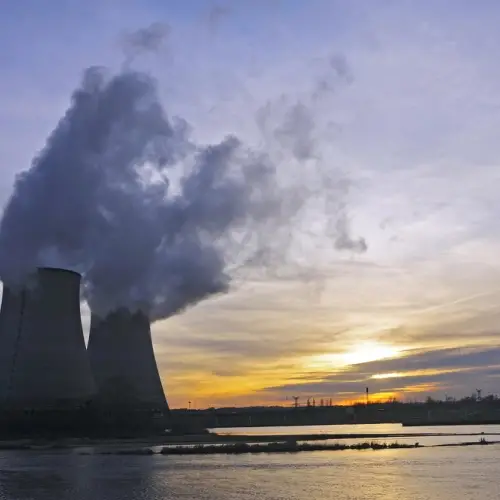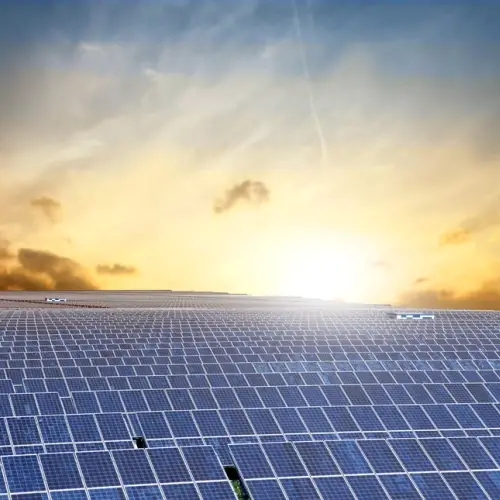
Conservation of energy is one of the most important and universal principles in physics, applying to all systems and processes, whether natural or man-made. This principle states that energy is neither created nor destroyed, but rather transformed from one form to another. The total amount of energy in a closed system remains constant.
Below, we will explore 11 examples of energy conservation in different contexts, illustrating how this principle applies in everyday life and in nature.
1. Energy conversion on a roller coaster
 Roller coasters are an excellent example of conservation of energy. At the start of the ride, the roller coaster car is pulled to the top of the first hill, building up gravitational potential energy due to its height. As the car descends, this potential energy is converted to kinetic energy, which increases the speed of the car.
Roller coasters are an excellent example of conservation of energy. At the start of the ride, the roller coaster car is pulled to the top of the first hill, building up gravitational potential energy due to its height. As the car descends, this potential energy is converted to kinetic energy, which increases the speed of the car.
At the bottom of the hill, almost all of the potential energy has been converted to kinetic energy. As the car climbs the next hill, the kinetic energy is converted back to potential energy. In an ideal frictionless system, the sum of potential energy and kinetic energy would remain constant throughout the entire ride.
In reality, some energy is dissipated as heat and sound due to friction, but the principle of conservation of energy still holds: the total initial (potential) energy is transformed, but not lost.
2. Energy conservation in a nuclear power plant
 In a nuclear power plant, the principle of conservation of energy is clearly observed. The process begins with nuclear fission, in which the nuclei of heavy atoms such as uranium or plutonium split into lighter nuclei, releasing a large amount of energy. This energy released during fission manifests itself mainly in the form of heat. The heat generated is used to convert water into steam, which then drives turbines connected to electric generators.
In a nuclear power plant, the principle of conservation of energy is clearly observed. The process begins with nuclear fission, in which the nuclei of heavy atoms such as uranium or plutonium split into lighter nuclei, releasing a large amount of energy. This energy released during fission manifests itself mainly in the form of heat. The heat generated is used to convert water into steam, which then drives turbines connected to electric generators.
The initial nuclear energy contained in the nuclear fuel is thus transformed into thermal energy and, finally, into electrical energy that can be used for various purposes. Although radioactive waste is produced, the total amount of energy is conserved throughout the transformation process.
3. Energy transformation in a hydroelectric power plant
 Hydroelectric power plants harness the potential energy of water stored in a dam. When water is released, it flows through turbines, converting gravitational potential energy into kinetic energy as the water falls. The turbines spin and this kinetic energy is transformed into mechanical energy. This mechanical energy is then converted into electrical energy by generators.
Hydroelectric power plants harness the potential energy of water stored in a dam. When water is released, it flows through turbines, converting gravitational potential energy into kinetic energy as the water falls. The turbines spin and this kinetic energy is transformed into mechanical energy. This mechanical energy is then converted into electrical energy by generators.
Although the energy is transformed several times, from the potential energy of water to electrical energy, the total amount of energy remains constant, demonstrating conservation of energy.
4. Energy in a moving car
A car moving at a constant speed also exemplifies the conservation of energy. The car's engine converts the chemical energy of the fuel into mechanical energy, which is used to move the car. As the car moves, the vehicle's kinetic energy is the result of this conversion. In addition, some of the chemical energy is dissipated as heat in the engine and brakes, and some is converted into sound energy.
Despite these transformations, total energy is conserved: the chemical energy of the fuel has been transformed into other forms of energy, but has not been created or destroyed.
5. Energy in a chemical reaction
 In chemical reactions, such as wood combustion, conservation of energy is a key principle. When wood burns, the chemical energy stored in molecular bonds is released as heat and light. This thermal energy can be used to heat a space or cook food.
In chemical reactions, such as wood combustion, conservation of energy is a key principle. When wood burns, the chemical energy stored in molecular bonds is released as heat and light. This thermal energy can be used to heat a space or cook food.
During the reaction, atoms are rearranged to form new products (such as carbon dioxide and water), but the total amount of energy before and after the reaction remains the same. Chemical energy has been transformed, but not lost or created.
6. Energy conversion in a light bulb
When we turn on a light bulb, a series of energy transformations take place that illustrate the principle of conservation of energy. The electrical energy that powers the bulb is converted into heat and light energy. In an incandescent bulb, a large portion of the electrical energy is converted into heat due to the resistance of the filament, and the remainder is converted into visible light.
In LED bulbs, the conversion is more efficient, with less energy transformed into heat and more into light.
In both cases, the total energy supplied is conserved, being transformed into other forms of energy.
7. Energy in photosynthesis
 Photosynthesis is a fundamental process in nature that demonstrates the conservation of energy. Plants capture light energy from the sun and convert it into chemical energy in the form of glucose, which they store in their tissues. This chemical energy is used to fuel plant growth and reproduction.
Photosynthesis is a fundamental process in nature that demonstrates the conservation of energy. Plants capture light energy from the sun and convert it into chemical energy in the form of glucose, which they store in their tissues. This chemical energy is used to fuel plant growth and reproduction.
Solar energy is therefore not destroyed, but transformed into chemical energy, which can then be consumed by other organisms in the food chain. During photosynthesis, light energy is conserved by being converted into a usable form for plants.
8. The principle of conservation in wind energy
 In a wind farm, the wind moves the blades of wind turbines, converting the kinetic energy of the wind into mechanical energy. This mechanical energy is then transformed into electrical energy by a generator. Although some of the energy is lost as heat due to friction, the total energy is conserved. The initial kinetic energy of the wind has been transformed into electrical energy, which can be used to power homes, industries, and other devices.
In a wind farm, the wind moves the blades of wind turbines, converting the kinetic energy of the wind into mechanical energy. This mechanical energy is then transformed into electrical energy by a generator. Although some of the energy is lost as heat due to friction, the total energy is conserved. The initial kinetic energy of the wind has been transformed into electrical energy, which can be used to power homes, industries, and other devices.
This process shows how the kinetic energy of the wind is converted into useful forms of energy without being lost in the overall process.
9. Energy conversion in a solar cell
 Solar cells convert light energy from the sun into electrical energy. When sunlight hits a solar cell, photons (light particles) transfer their energy to electrons in the cell's semiconductor material, generating a flow of electric current. This process, known as the photovoltaic effect, is a clear example of energy conservation, where light energy is transformed directly into electrical energy.
Solar cells convert light energy from the sun into electrical energy. When sunlight hits a solar cell, photons (light particles) transfer their energy to electrons in the cell's semiconductor material, generating a flow of electric current. This process, known as the photovoltaic effect, is a clear example of energy conservation, where light energy is transformed directly into electrical energy.
The total energy is conserved, it is simply changed into a form so that it can be used to power electrical devices.
10. Thermal energy in an internal combustion engine
 In an internal combustion engine, such as that in a car, the chemical energy of the fuel (such as gasoline or diesel) is converted into heat energy during combustion. This heat energy increases the pressure in the engine's cylinders, driving the pistons and converting heat energy into mechanical energy that moves the car.
In an internal combustion engine, such as that in a car, the chemical energy of the fuel (such as gasoline or diesel) is converted into heat energy during combustion. This heat energy increases the pressure in the engine's cylinders, driving the pistons and converting heat energy into mechanical energy that moves the car.
In this process, part of the chemical energy of the fuel is converted into heat and part into mechanical energy that is used for the motion of the vehicle. Although not all of the energy is converted into useful work (due to friction, heat and other forms of energy dissipation losses), the total energy of the system is conserved.
The original chemical energy has simply been transformed into different forms, again illustrating the principle of conservation of energy.
11. Energy in a simple pendulum
 A simple pendulum, such as that of an old clock, also demonstrates conservation of energy. As the pendulum swings from its equilibrium position to a high point, the kinetic energy of the pendulum decreases while its gravitational potential energy increases.
A simple pendulum, such as that of an old clock, also demonstrates conservation of energy. As the pendulum swings from its equilibrium position to a high point, the kinetic energy of the pendulum decreases while its gravitational potential energy increases.
At the highest point of its swing, all of the kinetic energy has been transformed into potential energy. When the pendulum swings back down, the potential energy is converted back into kinetic energy.
This process of exchange between kinetic and potential energy continues, with the total energy (sum of kinetic and potential) remaining constant in the absence of dissipative forces such as air friction.